FAQ
Post-Op Care FAQ
1. What is post-operative care?
Post-operative (post-op) care is specialized treatment provided after cosmetic surgery to support healing, reduce swelling, and help achieve the best results. It often includes lymphatic drainage massages, wound care, and recovery guidance.
2. Why is post-op care important after surgery?
Proper post-op care can help minimize complications like fibrosis, fluid buildup, and prolonged swelling. It also promotes faster healing, improves comfort, and enhances the overall results of your procedure.
3. When should I start post-op care treatments?
You should begin treatments as soon as your surgeon allows—typically within 24 to 72 hours after surgery. Early care is crucial for reducing inflammation and preventing fluid retention.
4. How many sessions will I need?
The number of sessions depends on your procedure and how your body responds to healing. I recommend getting massages for the first 3 months.
5. What types of post-op treatments do you offer?
I offer services such as manual lymphatic drainage, ultrasound cavitation, skin tightening, and fibrosis prevention treatments, all tailored to your stage of healing and your body’s needs.
6. Is post-op massage painful?
Post-op massage should never be excessively painful. You may feel some discomfort, especially early on, but the techniques I use are gentle and effective, always keeping your safety and comfort in mind.
7. Do you work with clients who’ve had surgery in other countries (e.g., the DR, Mexico)?
Yes! I welcome clients from all over, regardless of where they had their procedure. I’ll assess your current healing stage and develop a treatment plan that fits your needs.
8. What should I bring to my first post-op appointment?
Please bring any medical clearance or post-op instructions from your surgeon, any compression garments, and be sure to wear loose, comfortable clothing.
9. Do I have to wear my faja for 3 months ?
Wearing your faja consistently for 3 months is key to healing and shaping your results. It helps reduce swelling, supports skin retraction, prevents fluid buildup, and promotes a smoother, more sculpted outcome. Think of it as an essential tool for your recovery and final look.
10. How do I book a session?
You can book your session through Here. If you have questions before booking, feel free to contact me directly through 407-990-2025.
Body contour FAQ
1. What is non-invasive fat reduction?
Non-invasive fat reduction uses advanced technologies (like ultrasound cavitation, radiofrequency, wood therapy or laser lipolysis) to target and break down fat cells without surgery or downtime. These treatments help sculpt and contour specific areas of the body.
2. How does ultrasound cavitation work?
Ultrasound cavitation uses low-frequency sound waves to break down fat cells, which are then naturally eliminated by your lymphatic system. It’s completely non-invasive and can be used on areas like the abdomen, thighs, arms, and back.
3. Is fat reduction permanent?
The fat cells that are destroyed are gone for good—but maintaining your results depends on your lifestyle. A healthy diet, regular movement, and hydration are key to preventing new fat buildup.
4. Does it hurt?
Not at all. Most clients describe the treatment as warm, relaxing, and pain-free. Some may feel a slight tingling or hear a buzzing sound during ultrasound treatments, but it's totally safe and comfortable.
5. How many sessions do I need?
While some people see results after 1–3 sessions, most clients benefit from 6–12 sessions, depending on their body goals, the area being treated, and how their body responds.
6. When will I see results?
You may notice a difference after the first few sessions, but the most visible results typically appear 3–6 weeks after completing your treatment plan, as your body gradually eliminates the fat.
7. Can this help with loose skin too?
Yes! Many fat reduction treatments are combined with skin tightening technologies (like radiofrequency), which help firm and smooth the skin as fat is reduced.
8. Who is a good candidate for fat reduction treatments?
These treatments are ideal for people who are close to their ideal weight or trying to get in a healthy routine but struggle with stubborn fat areas that don’t respond to diet or exercise. It’s not a weight-loss solution, but it’s great for shaping and contouring.
9. What areas can be treated?
Common treatment areas include the stomach, love handles, thighs, back, arms, bra roll, and chin. Sessions can be tailored to your unique body goals.
10. How do I prepare for my session?
Stay well-hydrated before and after your session, avoid heavy meals and alcohol, and wear comfortable clothing. I’ll provide full pre- and post-care instructions at your first visit.
11. How do I book a consultation or treatment?
You can book directly through here or feel free to contact me at 407-990-2025

